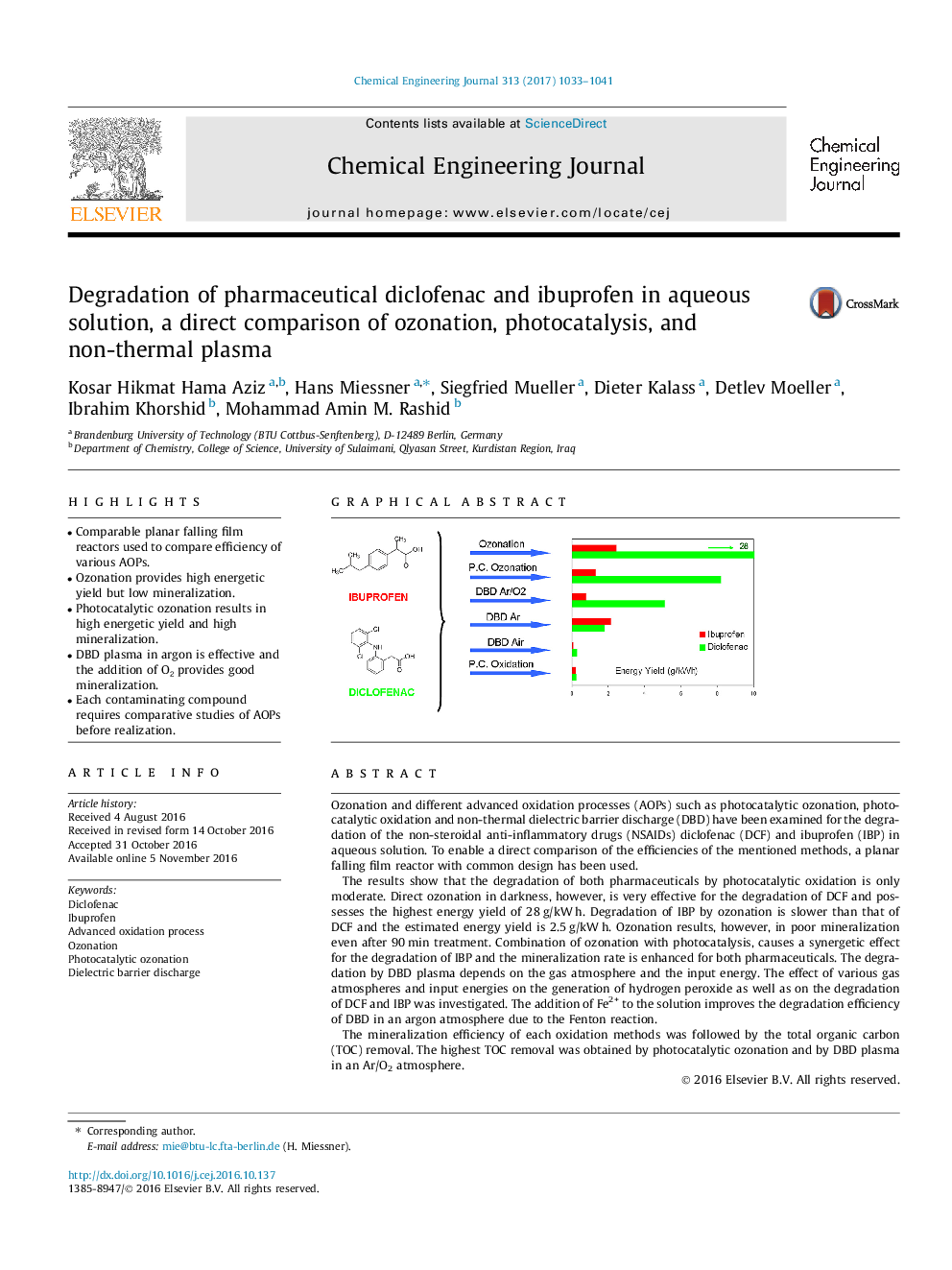| کد مقاله | کد نشریه | سال انتشار | مقاله انگلیسی | نسخه تمام متن |
|---|---|---|---|---|
| 6466659 | 1422965 | 2017 | 9 صفحه PDF | دانلود رایگان |
- Comparable planar falling film reactors used to compare efficiency of various AOPs.
- Ozonation provides high energetic yield but low mineralization.
- Photocatalytic ozonation results in high energetic yield and high mineralization.
- DBD plasma in argon is effective and the addition of Oâ provides good mineralization.
- Each contaminating compound requires comparative studies of AOPs before realization.
Ozonation and different advanced oxidation processes (AOPs) such as photocatalytic ozonation, photocatalytic oxidation and non-thermal dielectric barrier discharge (DBD) have been examined for the degradation of the non-steroidal anti-inflammatory drugs (NSAIDs) diclofenac (DCF) and ibuprofen (IBP) in aqueous solution. To enable a direct comparison of the efficiencies of the mentioned methods, a planar falling film reactor with common design has been used.The results show that the degradation of both pharmaceuticals by photocatalytic oxidation is only moderate. Direct ozonation in darkness, however, is very effective for the degradation of DCF and possesses the highest energy yield of 28Â g/kWÂ h. Degradation of IBP by ozonation is slower than that of DCF and the estimated energy yield is 2.5Â g/kWÂ h. Ozonation results, however, in poor mineralization even after 90Â min treatment. Combination of ozonation with photocatalysis, causes a synergetic effect for the degradation of IBP and the mineralization rate is enhanced for both pharmaceuticals. The degradation by DBD plasma depends on the gas atmosphere and the input energy. The effect of various gas atmospheres and input energies on the generation of hydrogen peroxide as well as on the degradation of DCF and IBP was investigated. The addition of Fe2+ to the solution improves the degradation efficiency of DBD in an argon atmosphere due to the Fenton reaction.The mineralization efficiency of each oxidation methods was followed by the total organic carbon (TOC) removal. The highest TOC removal was obtained by photocatalytic ozonation and by DBD plasma in an Ar/O2 atmosphere.
72
Journal: Chemical Engineering Journal - Volume 313, 1 April 2017, Pages 1033-1041
